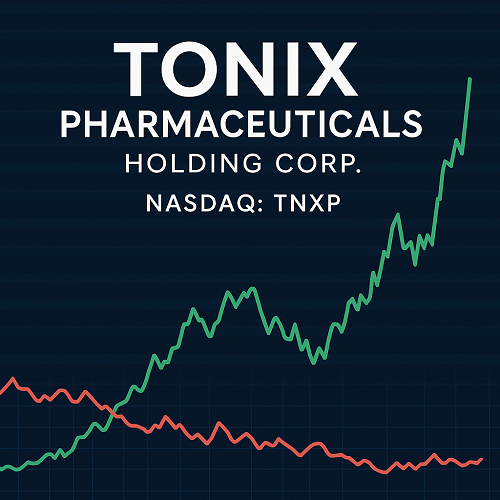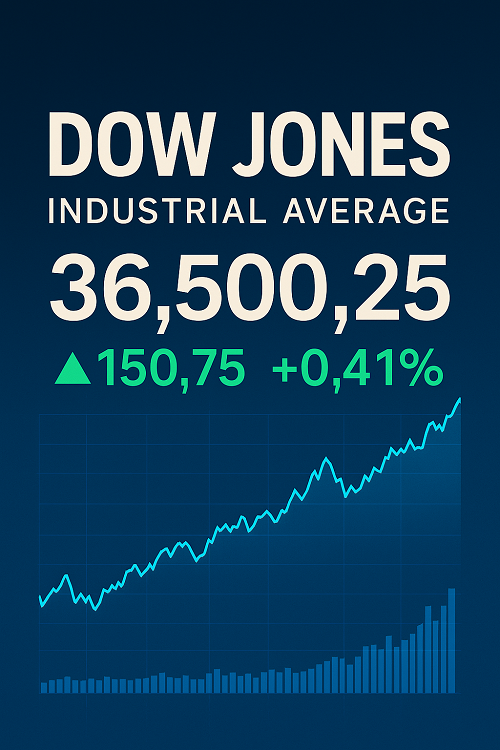What Is Online Trading — Definition & Key Concepts
Definition:
Online trading refers to buying and selling financial instruments via digital platforms (web, mobile, APIs) rather than via traditional floor brokers or phone. Traders attempt to profit from short-term price movements by speculating on market direction.
Key Dimensions:
- Derivative vs Spot vs Ownership
Many online platforms offer derivative instruments (like CFDs, futures, options) that let you gain exposure without owning the underlying asset. Others allow spot trading (e.g. crypto) or direct ownership (stocks). - Going Long vs Going Short
You can bet that price will rise (long) or fall (short). Derivatives make shorting easier, but shorting carries special risks (e.g. unlimited loss for stocks going up). - Leverage & Margin
Leverage lets you control larger position sizes than your capital alone. For example, 10× leverage means a 1% move in the asset causes ~10% gain or loss. But leverage magnifies risk. - Bid–Ask Spread, Slippage & Fees
You pay the spread and may incur slippage (price difference from expected). Commission structures vary by broker. - Liquidity & Market Hours
Some markets run 24/5 (forex), some 24/7 (crypto), others only during exchange hours (stocks). - Risk & Volatility
Volatility is your friend and foe — it generates opportunity but increases risk.
⚠️ Risk warning: Many retail traders lose money — managing risk is paramount. Always understand what you’re doing before trading.
Active Trading vs Investing: What’s the Difference?
| Feature | Investing | Active Trading |
|---|---|---|
| Time horizon | Months to years | Minutes to weeks |
| Objective | Asset growth, dividends | Speculative gains |
| Ownership | Yes (stocks, ETFs, crypto) | Often via derivatives |
| Risk | Volatile but more moderated | Higher risk per trade |
| Strategy | Fundamental, buy & hold | Mixed: technical, event-driven, scalping |
Why trade vs invest?
Trading offers higher potential returns (and higher potential losses), more leverage, flexibility to profit in downtrends via shorting, and more frequent opportunities. But it also demands more monitoring, discipline, and risk controls.
Popular Markets You Can Trade Online
Stocks / Equity CFDs & Shares
- Trade large-cap and small-cap shares
- Benefit from earnings reports, news, technical patterns
- Dividends may or may not apply (in CFDs)
Forex / Currency Pairs
- Highly liquid, low spreads
- Major (EUR/USD, GBP/USD), minor, exotic pairs
- Influenced by macroeconomic data: interest rates, inflation, central bank policy
Cryptocurrencies
- Spot trading (own asset) or derivatives (futures, perpetuals)
- Operates 24/7
- High volatility — many opportunities but also high risk
- Use caution for margin in crypto
Commodities & Energy
- Gold, silver, oil, natural gas
- Hedging demand and supply, geopolitical risk
- Some trade via derivative contracts
Indices & ETFs
- Indices (S&P 500, NASDAQ, FTSE) represent broad market trends
- ETFs may let you trade baskets of stocks
Other Instruments
- Options, futures, bonds, interest-rate derivatives
- More advanced — suited for intermediate/advanced traders
How to Get Started: Step-by-Step Guide
Step 1: Educate Yourself
- Read about market mechanics, risk management
- Watch webinars, courses, trading blogs
- Learn basic technical & fundamental analysis
Step 2: Open a Demo / Practice Account
- Use virtual money to test platforms, orders, strategies
- Try different markets and setups
Step 3: Develop a Trading Plan
- Define markets to trade, timeframes, strategies
- Set rules for entry, exit, stop-loss, take-profit
- Determine capital allocation per trade
Step 4: Choose a Broker & Platform (see next section)
- Ensure regulation, security, fees, order execution
- Test platform UI, mobile app, charting tools
Step 5: Place First Trades (small size)
- Start with low capital or micro-lots
- Focus on execution, tracking, learning
Step 6: Review & Optimize
- Keep a trading journal
- Analyze both winning and losing trades
- Adjust your strategies, techniques, risk rules
Choosing the Right Broker / Platform in 2025
Selecting a broker is foundational. A bad broker can erode your edge.
Key Criteria to Evaluate:
- Regulation & Trustworthiness
- Look for licenses in top-tier jurisdictions (UK FCA, US SEC/CFTC, EU ESMA, Australia ASIC, etc.)
- Segregated client funds, strong capital base
- Fees, Spreads & Commission
- Compare spread-only vs commission-based vs hybrid
- Look for hidden fees: withdrawal, inactivity, data feed, platform
- Execution Quality & Slippage
- Fast execution with minimal slippage
- No “requotes” or unfair rejections
- Platform / UI / Tools
- Intuitive charts, indicators, alerts
- Mobile app, web client, desktop client
- Support for third-party tools (e.g. MT4, MT5, TradingView)
- Leverage / Margin Options
- Flexible leverage levels (with responsibility)
- Tiered margin requirements
- Assets & Markets Offered
- Stocks, forex, crypto, commodities, indices
- Variety gives flexibility
- Order Types & Risk Tools
- Stop-loss, take-profit, trailing stop, OCO orders
- Hedging, margin calls, negative balance protection
- Customer Support & Resources
- 24/5 or 24/7 support
- Educational materials, market research
- API / Automation / Algo Support
- For advanced users: REST, WebSocket, FIX APIs
- Ability to run bots or integrate with external systems
Top Broker Examples (2025) (verify in your jurisdiction)
- Broker A – strong global presence, low spreads
- Broker B – crypto + forex hybrid
- Broker C – advanced API & institutional-grade execution
(You’d research current best brokers in your country or niche.)
Trading Tools, Software & Automation
Charting & Indicators
- Use charting libraries (TradingView, TradingStation, MT5 charts)
- Popular indicators: Moving Averages, RSI, MACD, Bollinger Bands, VWAP
- Combine indicators with price action signals
Screeners & Scanners
- Filter markets by volatility, volume, trend, patterns
- Real-time alerts (breakouts, RSI oversold/overbought)
Backtesting & Strategy Simulators
- Use Python, R, or platforms like Amibroker, QuantConnect
- Test on historical data across multiple markets
Automation & Bots
- Use APIs for order automation
- Define logic rules (entry, exit, trailing, risk)
- Use safeguard conditions (max drawdown, time filters)
Copy Trading / Social Trading
- Follow verified traders’ strategies
- Good for beginners to observe and replicate
Fundamental & Technical Analysis: Core Methods
Technical Analysis
- Charts & patterns (head & shoulders, triangles, flags)
- Support & resistance levels
- Trend identification via moving averages, ADX
- Oscillators (RSI, MACD, Stochastic)
- Volume analysis & divergence
- Price action: pin bars, engulfing candles, inside bars
Fundamental Analysis
- Macro: GDP, inflation, interest rates, unemployment
- Sector & company fundamentals (earnings, balance sheets, P/E ratio)
- News / sentiment analysis
- Event-driven trades: earnings, economic releases, central bank decisions
Integrating Both
- Use fundamentals to pick themes/instruments
- Use technicals for timing entries & exits
- Use news filters to avoid volatility traps
Trading Strategies with Examples
Here are sample strategies across timeframes:
Strategy A: Trend Following (Swing / Position)
- Enter on pullbacks in a trending market
- Use 50 EMA & 200 EMA — look for EMA crossover
- Pullback to support, RSI rebounds
- Place stop a little below recent swing low
- Take profit: trailing stop or fixed risk-reward (e.g. 2× risk)
Strategy B: Breakout Strategy (Intraday)
- Identify range or consolidation
- Wait for breakout above resistance (or below support)
- Confirm with volume spike
- Entry: breakout + retest
- Stop: below breakout point
- Target: measured move of range height or trailing
Strategy C: Mean Reversion / Range Trading
- In sideway markets, trade extremes (oversold/overbought)
- RSI > 70 → short, RSI < 30 → long
- Use support/resistance bands (e.g. Bollinger Bands)
- Smaller profit targets, tight stops
Strategy D: News / Event-Based Scalping
- Trade short-term volatility around news releases
- Pre-set levels (volatility expansion zones)
- High risk: use small position sizes
- Exit quickly — aim for quick edge capture
Each strategy should be tested extensively on historical and demo data before live deployment.
Risk Management & Position Sizing
This is arguably the most critical section — many traders fail because they ignore it.
Basic Risk Rules
- Never risk more than 1–2% of your capital on a single trade
- Use stop-losses always
- Use take-profit or trailing stops
- Avoid over-leveraging
Position Sizing Methods
- Fixed Fractional: risk same percentage per trade
- Volatility-based sizing: size inversely proportional to recent volatility
- Kelly Criterion (conservative use): f=W−LRf = \frac{W – L}{R}f=RW−L where WWW = win rate, LLL = loss rate, RRR = risk/reward ratio
- Drawdown limits: cap max daily drawdown (e.g. 5%)
Portfolio / Risk Diversification
- Don’t over-expose to one instrument or correlated instruments
- Hedge when possible
- Use safe haven assets when markets are stressed
Risk Controls & Safety Nets
- Use hard stop-loss orders
- Use trailing stops once in profitable territory
- Implement “cooldown” rules: if you hit loss threshold, stop trading for the day
- Avoid trading during high-impact events unless strategy is built for it
Psychology, Discipline & Performance Tracking
The Mind of a Trader
- Emotional control: greed, fear, overconfidence
- Accept losses as part of trading
- Stick to plan — avoid impulsive deviations
- Use checklists to avoid mistakes
Journaling & Metrics
Track each trade:
- Entry, exit, instrument, time, rationale
- Profit & loss, drawdown
- Mistakes, lessons learned
Key performance metrics:
- Win rate, average win/loss
- Risk/reward ratio
- Expectancy: E=(Win%×AvgWin)−(Loss%×AvgLoss)\text{E} = (Win\% \times AvgWin) – (Loss\% \times AvgLoss)E=(Win%×AvgWin)−(Loss%×AvgLoss)
- Maximum drawdown
- Sharpe ratio, Sortino ratio
Review weekly, monthly — adapt strategy or rules when needed.
Common Pitfalls & How to Avoid Them
- Over-leveraging / overexposure
- Revenge trading after losses
- Ignoring stop-losses or moving them ignorantly
- FOMO (fear of missing out) entries
- Trading without a plan or strategy
- Overtrading (too many trades)
- Not adapting to market regime changes
- Using too many indicators (analysis paralysis)
- Chasing illiquid assets
Mitigation: have a robust plan, stick to rules, monitor performance & adjust.
Advanced Tips: Algorithmic Trading & Copy Trading
Algorithmic / Automated Trading
- Automate repeatable strategies
- Use frameworks (Python + backtesting libs, MetaTrader Expert Advisors, QuantConnect)
- Build risk filters, kill switches
- Deploy on VPS or in cloud for reliability
Copy & Mirror Trading
- Platforms allow following successful traders
- Good for learning, diversification
- But scrutinize the track record, drawdown, risk parameters
- Don’t blindly copy — risk adjust
Hybrid Approach
- Use manual oversight + automated signals
- Use bots for non-core portions, focus manually on high conviction trades
FAQs (Frequently Asked Questions)
Q: How much money do I need to start trading online?
A: It depends on the market and broker. Some allow micro accounts with $100 or less; margin/leverage can amplify your exposure. Still, start with what you can afford to lose.
Q: Is online trading safe?
A: Trading has inherent risk. Using regulated brokers, strong risk management, and education reduces risk, but no method is “safe.”
Q: Can I trade part-time?
A: Yes — many trade on evenings or weekends (especially crypto/forex), but limited time means you must use strategies suitable for your windows.
Q: What is the best trading timeframe?
A: There’s no “best.” Choose based on your personality, time availability, and capital. Day traders focus intraday; swing trades span days/weeks; position traders hold longer.
Q: Can I automate from day one?
A: Yes, but proceed carefully. Algorithms need testing and risk controls. Starting with manual trading while learning is wiser before automation.
Q: How much can I realistically earn?
A: It varies wildly — many traders lose money. Earnings depend on capital, strategy, discipline, and market conditions. Avoid unrealistic promises.
Conclusion & Next Steps
Online trading offers tremendous opportunity, but also requires education, discipline, and risk control. To summarize your path:
- Educate yourself deeply (join courses, read, practice)
- Use a demo account to test strategies risk-free
- Choose a reliable broker & platform
- Develop a clear trading plan (entry, exit, risk)
- Start small, review, and optimize
- Track performance rigorously
- Scale carefully and consider automation or copy strategies





 XAUT-USD
XAUT-USD  AMD
AMD  MARA
MARA  SHOP
SHOP  BULL
BULL  CL=F
CL=F